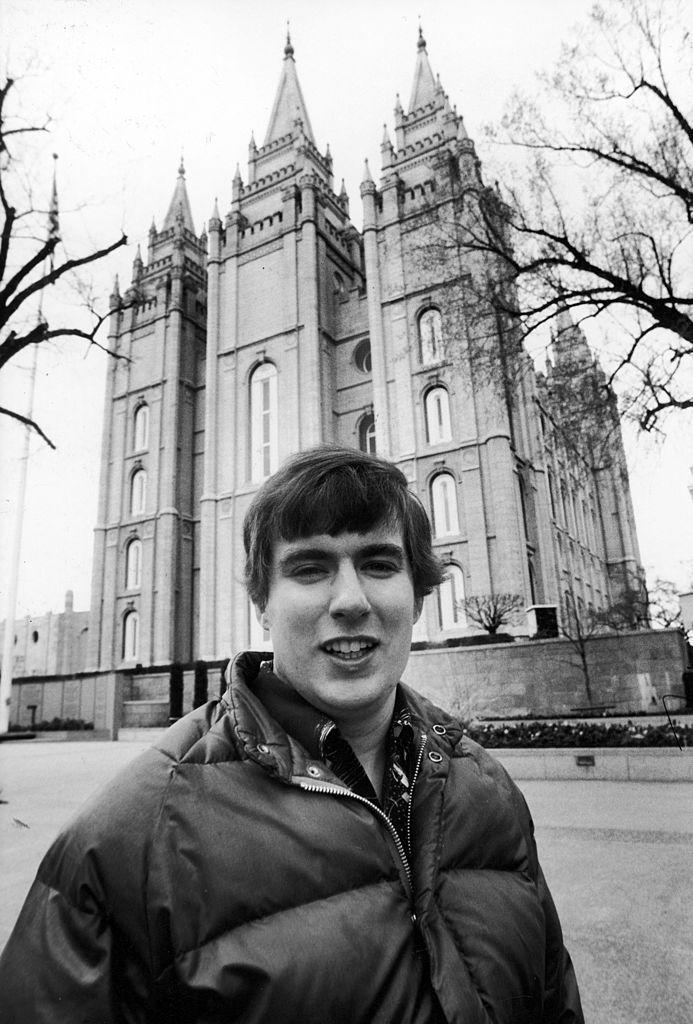All the Dark Details You Need to Know About the 1985 Utah Bombings

If you’re like us, you’re just learning about the 1985 Utah Bombings, which are resurfacing in the wake of the Netflix docuseries Murder Among the Mormons. Even though the incidents rocked local news and the broader Mormon community nearly 40 years ago, the series is the first to offer a comprehensive account of this true-crime story, told by its key players. We have no idea how it flew under the radar for so long, but now that we have all the details, it is a lot to sort through. Grab your notebooks (or conspiracy theory wall, whatevs) and let’s get started.
What were the 1985 bombings?
This story consists of three homemade pipe bombs that exploded in Salt Lake City in, you guessed it, 1985. The first went off a few minutes after 8 a.m. on October 15 and killed financial consultant Steve Christensen when he bent down to pick up a package left outside his office. The second bomb went off around 90 minutes later, killing housewife Kathy Sheets when she tried to grab a package that had arrived at her home. The following day, a third bomb went off, which injured (but didn’t kill) notable document collector Mark Hofmann while driving in his car.
What were the initial theories about the case?
According to Deseret News, investigators initially thought the culprit was targeting a company called CFS Financial Corp., since Christensen, along with the husband of Sheets, both worked there. When the third bomb went off in Hofmann’s car the following day, however, that motive seemed much less clear and Hofmann immediately became a suspect.
At this point, the case got so #complicated that the district attorney’s office used a computer for the first time to keep track of all the information. At first, they couldn’t figure out the connection among the three victims (if only Reddit had existed then to help them *sigh*), but eventually, they uncovered a compelling motive for Hofmann. This involved his very casual history of covering up a multitude of forgeries and massive amounts of debt. NBD.
Wait, who is this Hofmann guy?
Hofmann had been gathering celeb status in the early ’80s among Mormon historians. Hofmann was beloved in this circle because he had a knack for “finding” historical documents that collectors wanted but no one else had discovered before. If that sounds a little sus to you, that’s good. Because it was very sus!
No one at the time seemed to notice, though, and Hofmann made hundreds of thousands of dollars selling a variety of forged documents, most notably ones that involved the early years of Mormonism. The most notorious of these was the Salamander Letter, which was allegedly written by the BFF of Joseph Smith (founder of the church) and told a conflicting account of how the whole religion started (involving, yes, a salamander).

But how did this lead to the murders?
This all ties into the 1985 Utah Bombings because Christensen also dabbled in Mormon document collecting. As an amateur historian, he had purchased the Salamander Letter from Hofmann for $40,000 and donated it to the Mormon Church in 1983. When he was murdered by Hofmann, he was in the process of buying another set of documents from him called the McLellin Collection, which Hofmann promised had further intel about the Mormon origin story. The thing about the McLellin Collection was…it didn’t actually exist.
As the investigators would ultimately uncover, Hofmann had reached the end of his rope when it came to his life of deception. After covertly organizing what was essentially a Ponzi scheme of document forging, he was in about $1.1 million of debt and could no longer meet the production demands his business required. On the verge of getting caught but determined to keep up his ruse as long as possible, he decided to murder Christensen as a means of buying himself more time to figure the whole thing out. As for the other murder victim, Kathy Sheets, Hofmann would later explain to his parole board that her tragic death was simply a random diversion.
Ugh. Where is Hofmann now?
In 1987, Hofmann pleaded guilty to two counts of second-degree murder and was given a life sentence in prison. In case it wasn’t clear how wild this all is, he alternatively could have come clean about the forgery, earned himself only a few years in jail, and not senselessly taken the lives of two innocent people to keep up some elaborate scheme that no one actually GAF about. The phrase “do less” has never felt more appropriate.
While the past can’t be remedied, at least Hofmann is behind bars and the victims are now having their stories told on a never-before-seen scale. Since this recap was just the tip of the iceberg when it comes to the shocking details in this saga, you’re going to want to check out the Netflix documentary to hear the rest of the scoop from the people who actually lived it.
You love all the deets on true crime. So do we! Let’s overanalyze them together.
You Might Also Like

